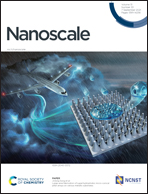Synthetic preparations and atomic scale engineering of silver nanoparticles for biomedical applications
Abstract
Owing to their peculiar oxidative effect, silver cations (Ag+) are well known for their antimicrobial properties and explored as therapeutic agents for biomedical applications. Size control with improved dispersion and stability are the key factors of Ag NPs (silver nanoparticles) to be used in biomedical applications. Silver based nano-materials are highly efficient due to their biological, chemical and physical properties in comparison with bulk silver. Atomic scale fabrication is achieved by rearranging the internal components of a material, in turn, influencing the mechanical, electrical, magnetic, thermal and chemical properties. For instance, size and shape have a strong impact on the optical, thermal and catalytic properties of Ag NPs. Such properties can be tuned by controlling the surface/volume ratio of Ag nanostructures with a small size (ideally <100 nm), in turn showing peculiar biological activity different from that of bulk silver. Silver nanomaterials such as nanoparticles, thin films and nanorods can be synthesized by various physical, chemical and biological methods whose most recent implementations will be described in this review. By controlling the structure–functionality relationship, silver based nano-materials have high potential for commercialization in biomedical applications. Antimicrobial, antifungal, antiviral, and anti-inflammatory Ag NPs can be applied in several fields such as pharmaceutics, sensors, coatings, cosmetics, wound healing, bio-labelling agents, antiviral drugs, and packaging.

- This article is part of the themed collection: Recent Review Articles


 Please wait while we load your content...
Please wait while we load your content...